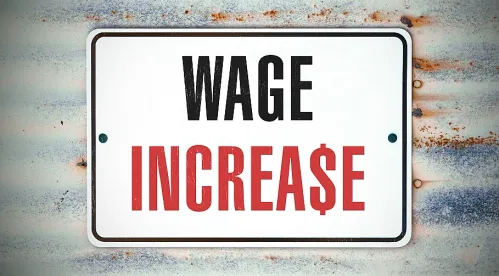With virtually no warning and effective immediately upon publication, as of October 8, 2020, the Department of Labor promulgated a regulation which, in effect, dramatically increases the wage that must be offered by any employer to an H1B, H1B1 and E3 worker and to any applicant for permanent residence based upon the Alien Labor Certification Program.
The Department of Labor relies on the Occupational Employment Statistics (OES) data from the Bureau of Labor Statistics (BLS) to determine the appropriate prevailing wage in a number of occupations.
For each occupation, it determines four wage levels, assigned based upon skill set, and ranging from "entry" to "highly experienced".
The levels are keyed to the wage range distribution for that particular occupation.
Prior to the promulgation of this regulation, Level I through Level IV were keyed to 17%, 34%, 50% and 67% of the wage distribution for the particular occupation. Under the new regulation it is 45%, 62%, 78% and 95%, respectively.
Taking as an example the prevailing wage for “Computer Occupation, All Other” in San Francisco as calculated a month ago compared to now, you can see how dramatic the difference is.
WAGE SEARCH RESULTS
San Francisco – Oakland - Hayward, CA
Computer Occupation, All Other
| Before October 8, 2020 Regulation | After October 8, 2020 Regulation |
|---|---|
| Level 1 $70,720 | Level 1 $103,771 |
| Level 2 $95,555 | Level 2 $150,925 |
| Level 3 $120,370 | Level 3 $198,099 |
| Level 4 $145,205 | Level 4 $245,253 |
If you want an H-1 worker or to sponsor an applicant for a green card, it is going to cost you a lot more, a hundred thousand dollars more at Level 4.
Prevailing Wage Determinations approved prior to October 8 will be honored, but any application pending now or to be filed now and going forward will be decided in accordance with the new regulation.
There is Hope
It is still permitted to rely on an alternate survey conducted by an independent authoritative source or another legitimate source (20 CFR Sec 655.732(B)(3) (iii) (B) and (C)) if it complies strictly with the regulatory specifications for such surveys in the DOL regulation.
We also anticipate that this interim regulation, will be the subject of litigation.
This is not the time or place to delve deeply into the many limitations, flaws and inaccuracies of the OES data, but suffice it to say that these determinations will often not be commensurate with what the market reflects, and will have a significant negative impact on recruiting and sponsoring foreign nationals that may be legitimately needed. It is, however, the new reality. Employers must once again be prepared to pay more than should be necessary for the talent they need, unless the courts intervene.






 />i
/>i
